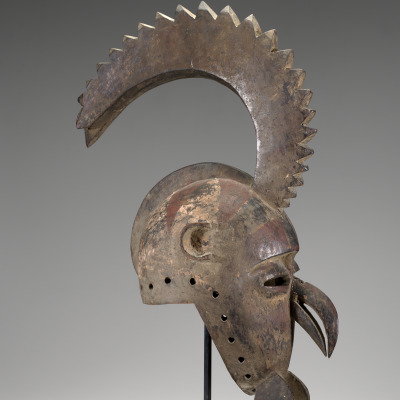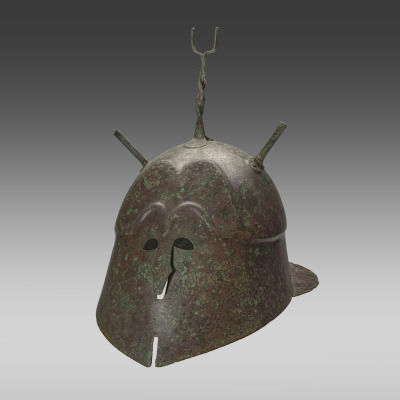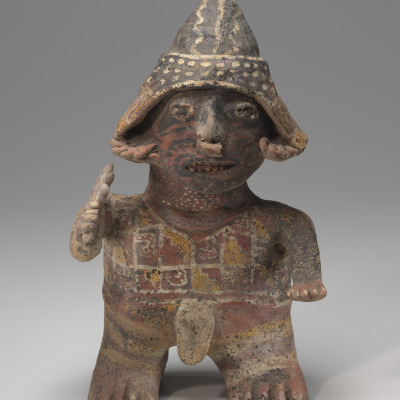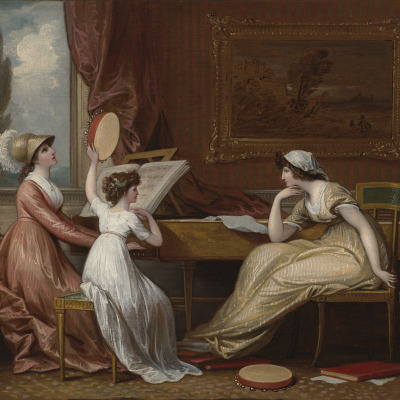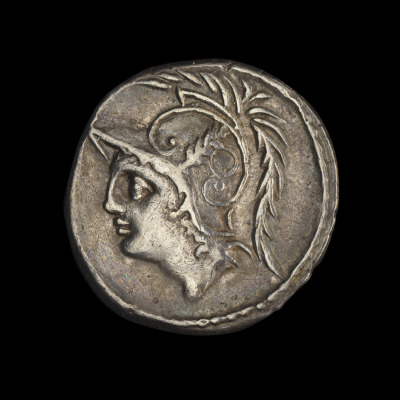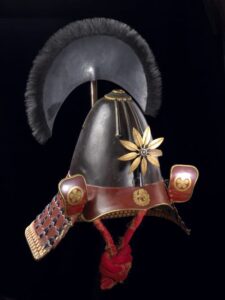
Art-Making Activity: Design a
Samurai Helmet
Learn about the art and culture of the samurai while you design your own helmet inspired by special exhibition, Samurai Armor from the Collection of Ann and Gabriel Barbier-Mueller.
INTRODUCTION
The samurai, whose name means “to serve”, were warriors who controlled many political and cultural aspects of Japan for over 700 years (from roughly the 12th – 19th century). They were hired by wealthy landowners to protect their land by battling other samurai. To go into battle, a samurai would need to have the right equipment to protect themselves like body armor and a helmet. For this project, we are going to focus on the samurai’s helmet or kabuto. The traditional samurai helmet was an iron bowl made from overlapping plates of metal and a neck guard of movable panels.
Elaborate ornaments were added for both practical and symbolic reasons. Samurai often adorned their helmets with decorations so they could be easily recognized on a crowded or smoke-filled battlefield. These decorations also reflected the samurai’s values and beliefs and were inspired by animals, plants, insects, sea creatures, and religious symbols.
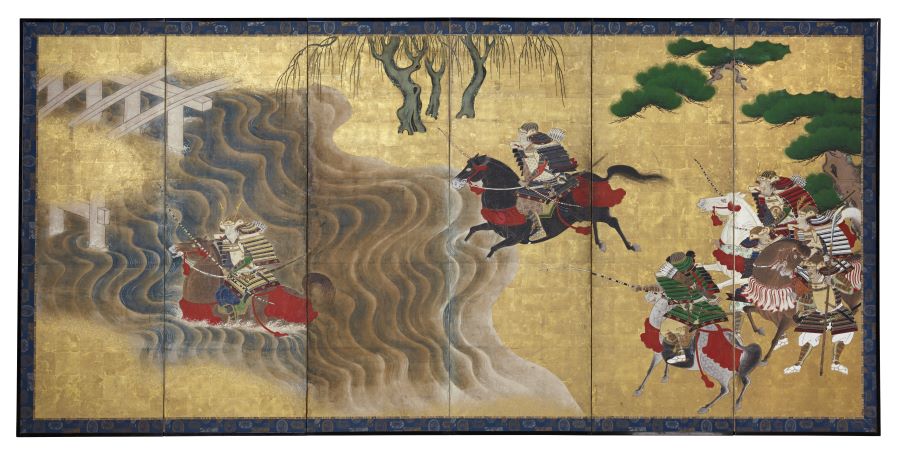
The Competition to Be First at Uji River, Japan, early 18th century, Six-panel folding screen, ink, color, and gold on paper. © The Ann & Gabriel Barbier-Mueller Museum, Dallas. Photo: Brad Flowers
Look at some examples of samurai helmets below!
Do you recognize any familiar symbols in these helmets? Select a helmet to reveal what may have inspired the helmet’s design.
Click on the hotspots to explore this helmet!
Elaborately shaped helmet, (Kawari Kabuto), Late Momoyama to early Edo period, early 17th century, Iron, leather, lacing, gilt bronze, gilt wood, © The Ann & Gabriel Barbier-Mueller Museum, Dallas, Photo: Brad Flowers
Think about how the samurai drew inspiration from the world around them when designing their helmets. Create your own helmet by following the steps below!
CREATE
Materials
- Helmet template
- One sheet of computer paper for printing
- One piece of notebook or scrap paper
- Pencil
- Crayons and/or colored pencils
- OPTIONAL: circle template, 1 sheet of computer paper for printing, 1 metal brad paper fastener
- OPTIONAL: glue/tape, small/lightweight found items or recycled materials
Instructions
This activity is inspired by the special exhibition, Samurai Armor from the Collection of Ann and Gabriel Barbier-Mueller on view at VMFA April 20 – August 4, 2024.
This exhibition is organized by The Ann & Gabriel Barbier-Mueller Museum, Dallas.
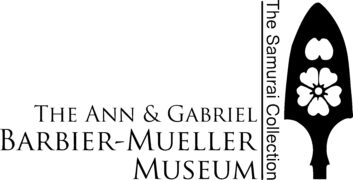
Educational materials for Samurai Armor from the Collection of Anne and Gabriel Barbier-Mueller are generously supported by the William R. Kenan, Jr. Charitable Trust.
Images (in order they appear on the page)
Peach‑Shaped Helmet (momonari kabuto) with Antlers, 17th–18th century Iron, gold, lacquer, © The Ann & Gabriel Barbier-Mueller Museum, Dallas, Photo: Brad Flowers
Elaborately Shaped Helmet (kawari kabuto), Early 17th century Iron, leather, lacing, gilt copper, bronze, gilt wood, © The Ann & Gabriel Barbier-Mueller Museum, Dallas, Photo: Brad Flowers
Helmet (kabuto) with Crest Representing Fudō Myōō and Half Mask (menpō), Early 17th century Iron, copper, gold, wood, leather, lacquer, lacing, © The Ann & Gabriel Barbier-Mueller Museum, Dallas, Photo: Brad Flowers
Kaen kabuto (flame helmet) representing hōju no tama (the flaming jewel), Signed: Unkai Mitsuhisa kore o tsukuru (made by Unkai Mitsuhisa), Early Edo period, ca. 1630. Iron, lacquer, lacing, gold, bronze, © The Ann & Gabriel Barbier-Mueller Museum, Dallas, Photo: Brad Flowers
Image of rabbit: JM Ligero Loarte, CC BY 3.0, via Wikimedia Commons
Image of rhinoceros: Dibyaranjan giri 2002, CC BY-SA 4.0, via Wikimedia Commons
Image of deer: Red Deer at the British Wildlife Centre, Newchapel, Surrey by Peter Trimming, CC BY-SA 2.0, via Wikimedia Commons
